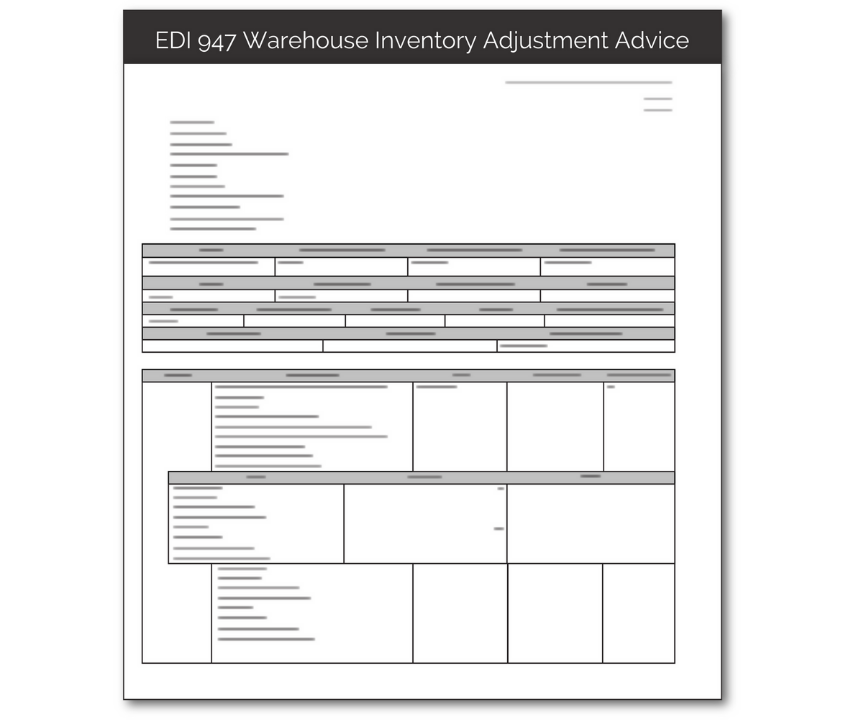EDI 947
Warehouse Inventory Adjustment Advice

What is an EDI 947?
EDI 947, also known as a Warehouse Inventory Adjustment Advice, is an EDI document used primarily by Third-Party Logistics companies (3PLs) or remote warehouses. When a 3PL sees a change in inventory numbers or statuses, they can use EDI 947 to notify their clients of the change.
EDI 947 documents follow the x12 format set by the American National Standards Institute (ANSI), a not-for-profit organization that regulates EDI formats in the U.S.
What are the Essential Components of EDI 947?
EDI 947 must contain specific details relating to inventory number and status changes. These include:
- Adjustment number and date
- Warehouse identification information
- Product identifying information, such as SKU or UPC
- Adjustment details, including the quantity change and reason for change


How Do I Use EDI 947?
Rather than being triggered by another EDI document, EDI 947 is usually sent in reflect any changes noted during physical inventory, cycle counts, or product expiry at the warehouse. The most common change in inventory quantity is due to product damage or expiry in the warehouse. The status of inventory might also change, such as when a selection of inventory is placed on hold for by quality assurance.
Typically, recipients of EDI 947 will respond with an EDI 997 Functional Acknowledgement to confirm receipt.
What are the Benefits of EDI 947?
Inventory changes are regular and expected within the supply chain. However, notifying partners about those changes is important in increasing both inventory visibility and accuracy. By communicating these changes, suppliers, 3PLs and sellers can have a precise view of their inventory across locations, and better plan for future sales and shipments.

EDI 947 replaces a paper version of the Warehouse Inventory Adjustment Advice, and the automation of the communication has multiple benefits. First off, electronic data interchange is more secure than its email, fax, or PDF counterparts. Second, because EDI documents pull data directly from business systems and other EDI documents, you don’t need to worry about data errors from manual retyping. Finally, the use of EDI enables you to streamline communications with trading partners, allowing you to save time and increase your supply chain efficiency.
